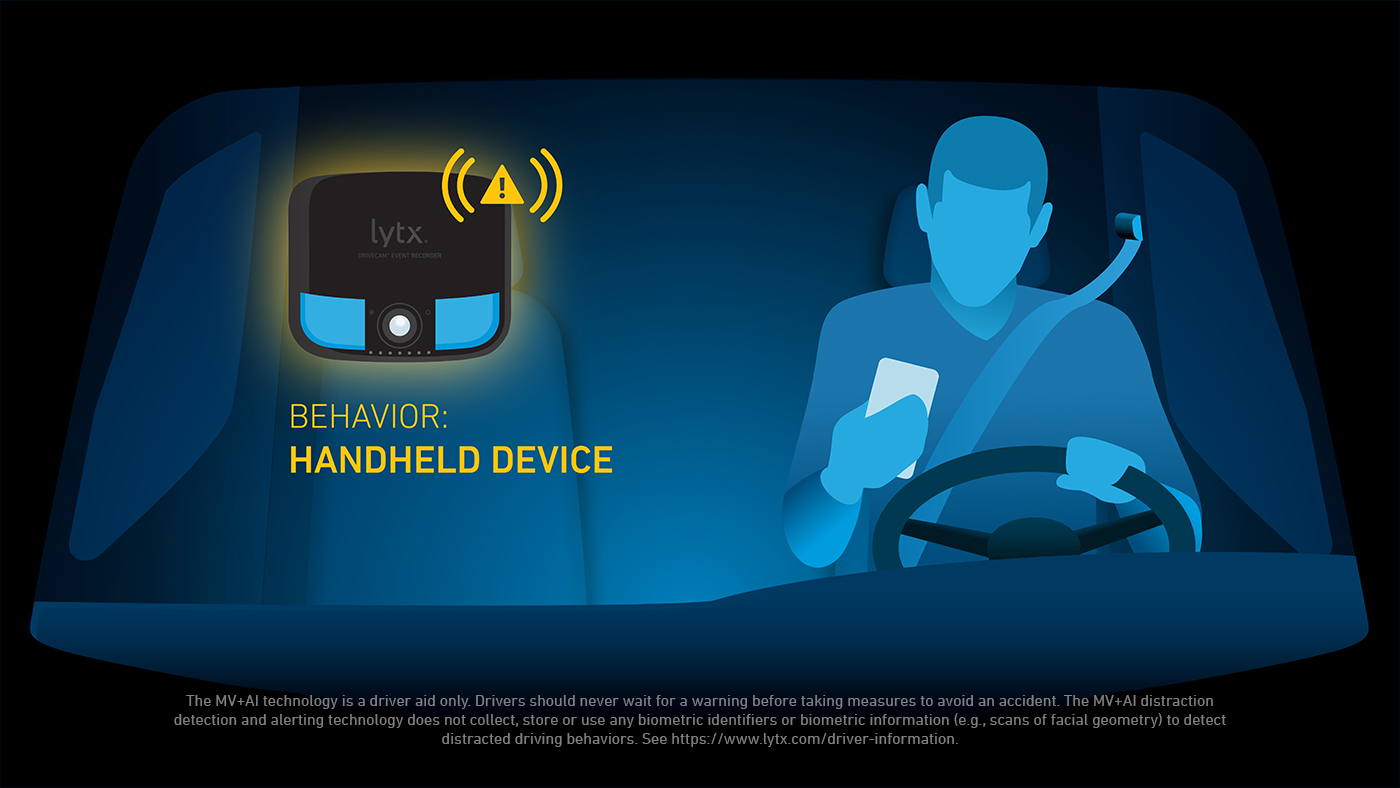Demystifying MV+AI Technology

What are machine vision and artificial intelligence (MV+AI)?
Machine vision (MV) is a suite of sensor technologies that work together to recognize objects and behavior using visual data. Artificial intelligence (AI) enables computers to recognize patterns and make informed predictions about what might happen next. Together, these technologies can detect environments, discover which patterns correlate with risk, and determine potential outcomes.
MV+AI can recognize when a driver is distracted – by a mobile phone, for example – and prompt the driver with an alert before something potentially goes wrong. This is made possible by a comprehensive “training” process: hundreds of thousands of images feed the technology to teach the MV algorithm what distracted driving, and other behaviors look like. This training data is combined with additional information from GPS and a multitude of other sensors to teach the AI how to reliably detect more complex location-based behavior.
Still, the algorithms can’t learn in a vacuum: human judgement plays a vital role in helping the system learn to spot driving conditions and driver behavior. Video is reviewed and the images are tagged to train the AI in knowing which data to consider more relevant. As the MV+AI system continues to learn, it identifies the correlation between behavior and risk more precisely, helping fleet managers identify which behaviors, locations, and drivers pose the greatest potential danger. In this way, MV+AI provide visibility into issues that were impossible to see just a few years ago.
MV+AI: an extra pair of eyes
The combination of machine vision and artificial intelligence brings the promise of detecting and anticipating risk, helping drivers avoid collisions and making the world safer. This technology serves as a tireless pair of extra eyes that can help alert drivers to hazards – including their own bad habits – and drive more safely.
But not all MV+AI systems are created equally. Without large amounts of high quality data, even the best algorithms can’t know what to look for. As advanced as machine learning has become, it still requires both billions of data points and expert humans to help train the technology to detect risk.
What makes Lytx so precise?
The MV+AI model is only as smart as the data used to train it. That’s why it is important for humans to help: the system can’t become an expert without the help of people who know which data is significant and what can be safely ignored.
Today, Lytx® MV+AI technology focuses specifically on the challenges of detecting risk in commercial fleets. Our technology draws from a cache of images collected over 221 billion miles of driving, tagging them for potentially hazardous behaviors and conditions. In 2021, Lytx analyzed and labeled more than 133 million driving events capturing key causes of driver distraction and increased risk. This combination of human analysis with traditional telematics data provides more insight than machine analysis of raw data alone.
Expanded view of risk?
Lytx uses innovative technology to reliably uncover true risk so you can focus on what matters without the distraction of irrelevant events or information. Our focus on training algorithms with the best data provides the most precise results possible, avoiding the false positives that come from subpar or un-curated data.
Our technology is developed with one purpose in mind: delivering a view of fleet risk you can trust. The combination of high data volume and accuracy means that our MV+AI algorithms have better raw materials to work with, helping to deliver more precise results so that you aren’t wading through an ocean of irrelevant information.
To learn more about Lytx's fleet safety and fleet tracking solutions, and the DriveCam® device that powers it all, contact us or book a demo today!
